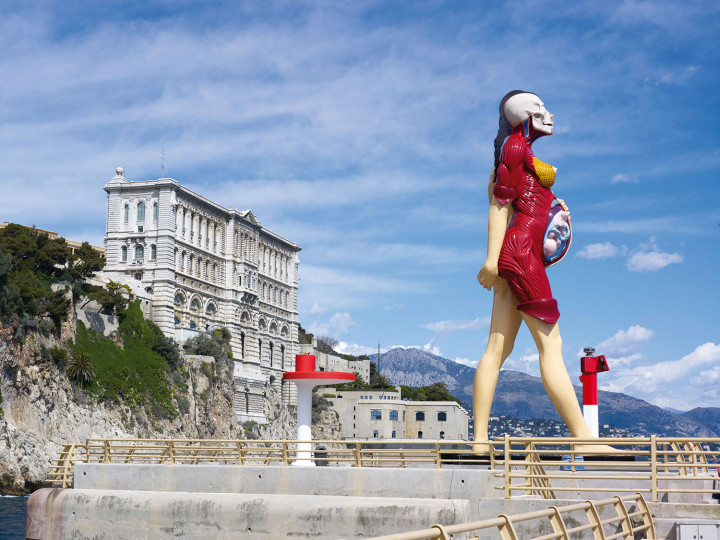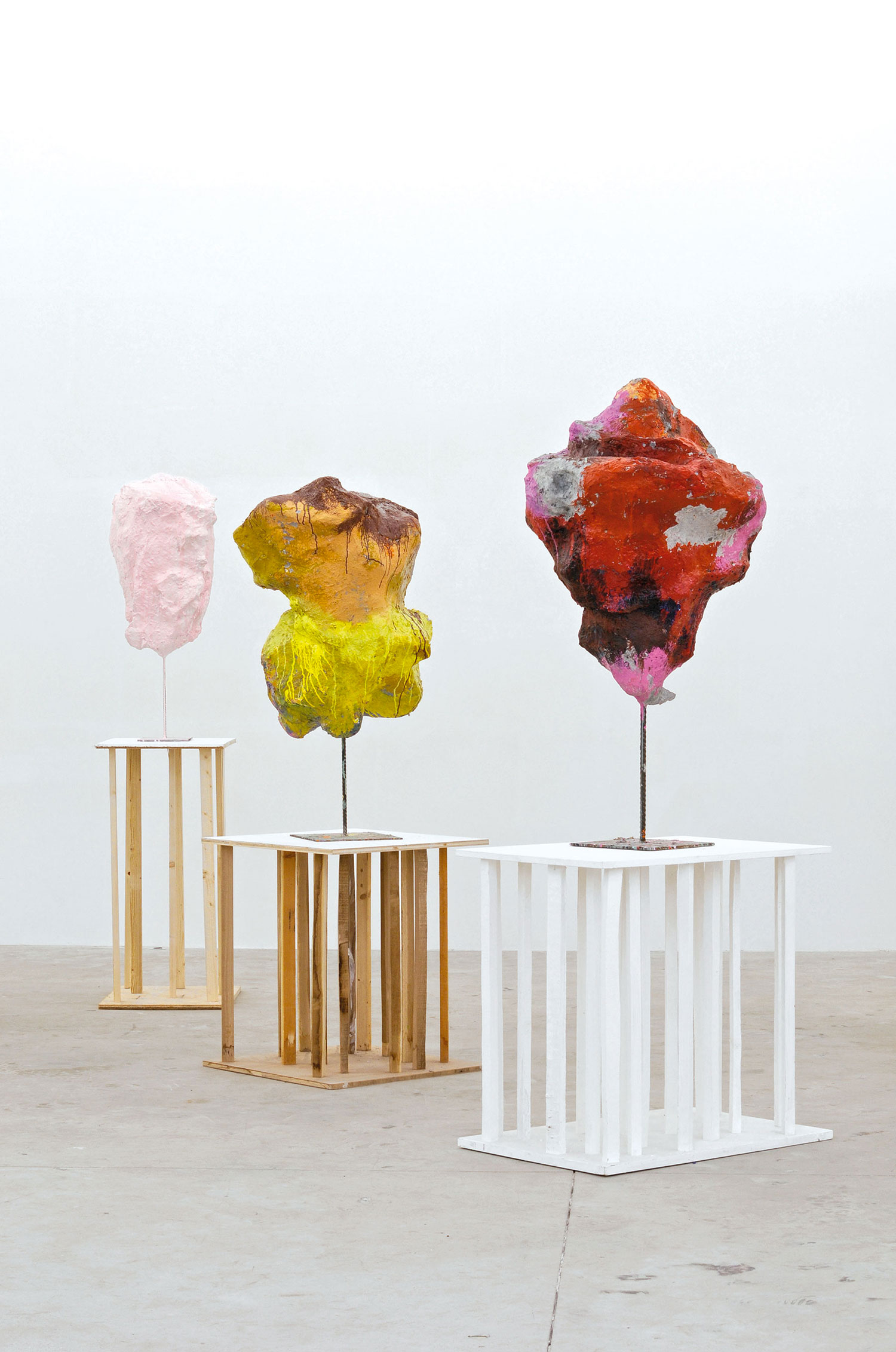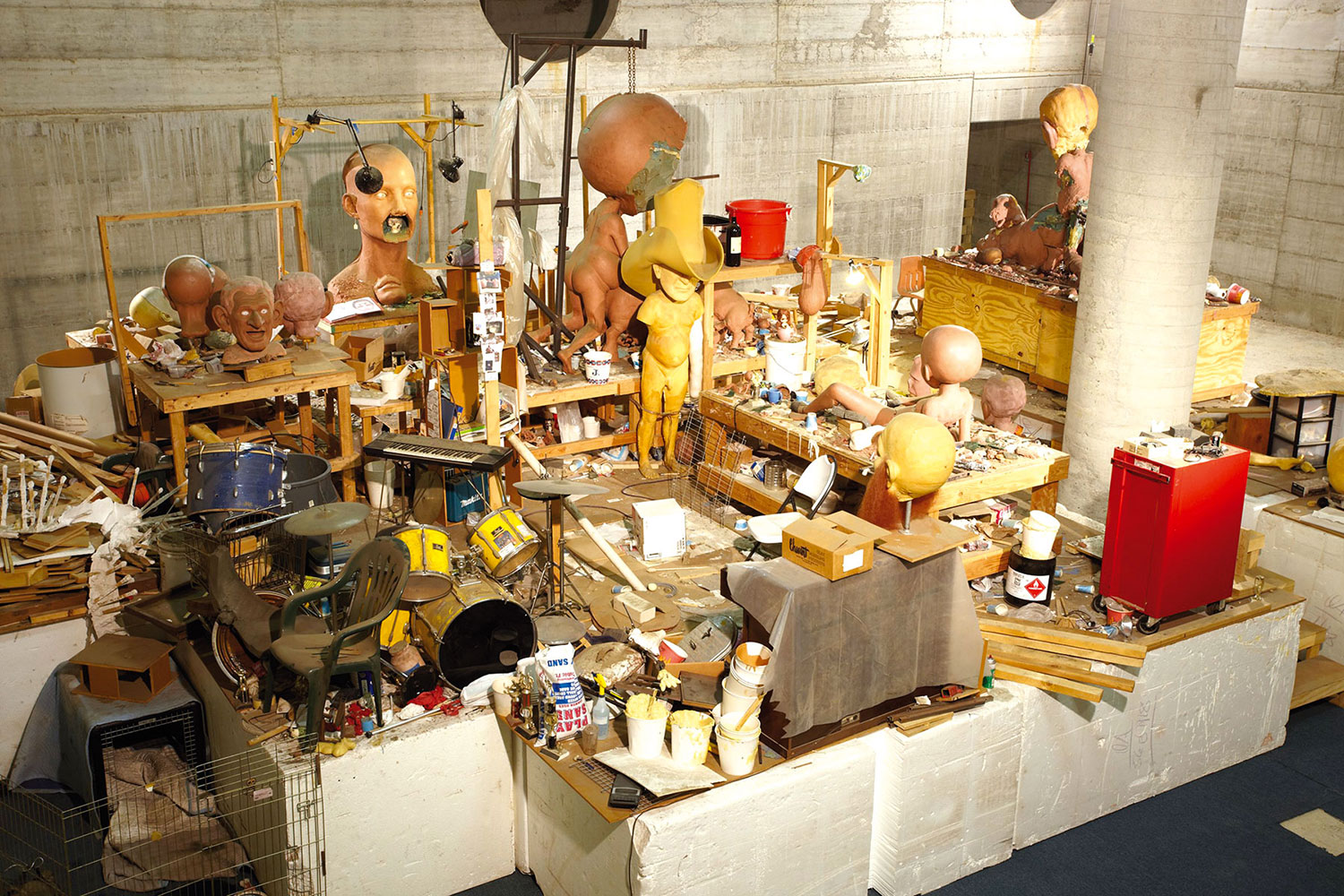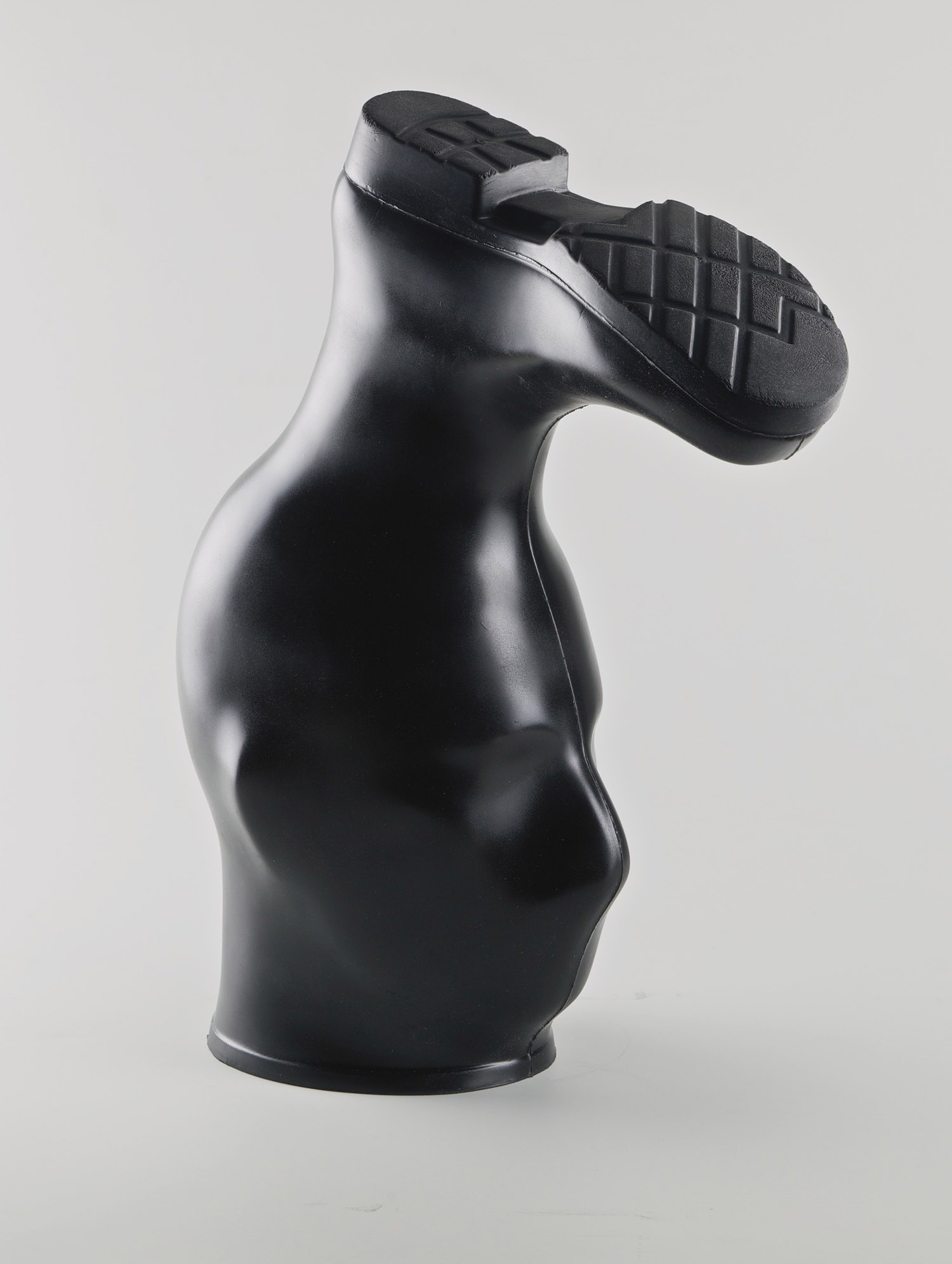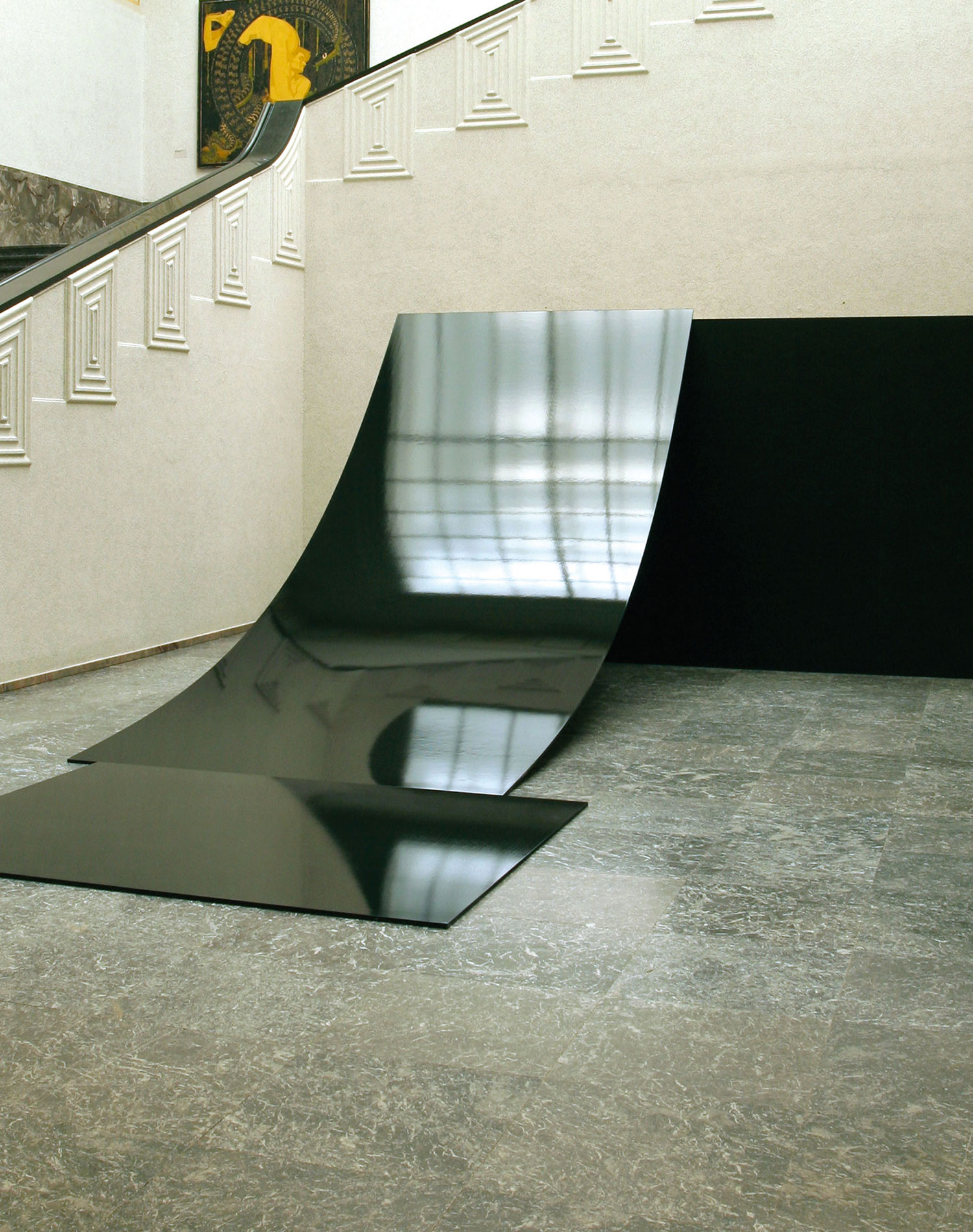
Michele Robecchi: How did “Cornucopia,” the exhibition at the Oceanographic Museum in Monaco, come about?
Damien Hirst: I love the museum. There’s not really a big history of contemporary art in Monaco but I always wanted to show in the museum. I like what they’re trying to do. I guess it’s the Victorian idea of bringing the world to the people. It’s amazing to be able to put my things in here and carry on what Prince Albert the First said about art and science being the driving force of society. I hope that he would have loved what I have done here.
MR: How did you select works?
DH: Initially I wanted to do six works and then I came in and walked around and in about half an hour I thought, OK, how about putting something here, and what about one thing there, and maybe some paintings there; it all just came to me very quickly and by the end of the day I had like 60 pieces. It just grew.
MR: Your work definitely looks good in strong-charactered museums. Even at the Archaeological Museum in Naples it worked very well…
DH: Yeah, I never wanted to do museum shows because I thought they were for dead artists, but then I did the Naples show and I thought it looks cool. When you put two things together and they work in a great way, it’s like a mathematical sum. It’s good for me, it’s good for the museum and the work looks good. It brings everything to a new dimension.
MR: The show at the Wallace Collection in London last fall worked on a similar principle. Were you annoyed when most of the attention was placed not on the paintings themselves but on the fact that you made them?
DH: I kind of expected it, you know. What I have always done is this : when they write good things, I try to ignore it, so when they write bad things, I can ignore it. There’s a great quote by Andy Warhol: “You don’t read your reviews, you wave them.” It’s all about volume. I really think it doesn’t matter that much. The Wallace had the biggest number of people visiting for that exhibition than for any one before. If nobody had gone to the exhibition, I would have been very disappointed. If you had said to me, “Damien, your last exhibition, you spent a lot of money, you did a big show, and nobody came, how do you feel?” I would have felt fucking horrible. That is the problem. Criticism I had on those paintings was just crazy. It was as if late Picasso didn’t exist. Or Twombly, even. You don’t have to do very much to make a painting. You just go and do it. I think the real problem was to show them at the Wallace with the old-master paintings. They thought I was saying I was an old master.
MR: Do you go visit exhibitions a lot?
DH: Yeah, I love shows. I don’t see as much young art as I’d like to, really.
MR: How’s your collection coming up?
DH: It’s growing fast, I have to slow down a little bit. You got to be careful not to buy more than you can possibly exhibit. Someone told me that the National Gallery’s collection is either on display, restored or on loan. No storage. That’s a great way to do your collection.

MR: You bought back some of your early work from Charles Saatchi, right?
DH: Yeah. I like Saatchi. I go to dinner with him and stuff, but he hasn’t bought my work for a long time and he doesn’t have any more of it. It’s a strange time because I never kept my work or anything in the beginning, I always sold everything, I never thought about it. And then I had children. I became a father and I started to keep things for the future. I had never thought about the future, so I had a big hole in my collection. Then Saatchi approached me and said he wanted to sell all this stuff; I had just had an exhibition with White Cube so I had some money. It made sense to me to translate the money into early works. It’s crazy because I had a medicine cabinet, which I sold to Saatchi for 500 pounds, and I bought it back for 500,000. It’s kind of mad thinking to do that. But now it’s worth more. I put more money than anybody else was prepared to pay and a lot of collectors were really impressed by that: the confidence you show in your own work. So it wasn’t a business strategy but it actually worked very well in terms of a business strategy.
MR: Do you think you are in a stage of your career where you want to surprise yourself as much as the viewer?
DH: I think maybe I am in a stage where I realize that I can’t anymore. I don’t know. It’s not surprising myself, maybe escaping myself.
MR: Not being Damien Hirst?
DH: Yeah. For a long time I tried not to be Damien Hirst, whereas I think now I’ve just accepted it. There’s one thing I’ve always done, you know, whenever I have a fucking idea: I just put a box around it. There’s the table and the chairs — in a box; there’s the shark — in a box; the medicines — in the cabinet. For a while I tried not to do it but then in the end I thought, I like boxes. You were born in a box. You will die in a box. So forget it, I’m just going to do boxes.
MR: The skull [For the Love of God, 2007] was in a box. Does the idea for that piece go back to when you used to go to the Leeds flea market as a kid, looking for diamonds?
DH: Yeah, that kind of symbol of wealth. The idea of finding a diamond and the whole mystery of it. When you find them they’re like pieces of carbon that need to be polished up. They’re free, they’re not something that you can manufacture. I suppose if you don’t have any money you can actually dream of discovering a diamond, you can dig in the ground and find one. They have all these things. Diamonds are forever, aren’t they?
MR: It’s a very ambivalent work in this sense. The perpetuity of diamonds and the temporality of life.
DH: As an artist I always look for universal triggers. I don’t like to be for or against anything. I like to say something and deny it at the same time. There is duality in everything I do. Is the skull a celebration or is it something nihilistic? It’s both. Is it helpful that we worship money? I don’t know. What’s important, ultimately, is that it doesn’t matter how much money you get, you can’t cheat death. I love the idea that when you die you can’t take it with you. The diamond skull is like the ultimate statement of pitching wealth against death. It ultimately fails, but it’s still the celebration of something. But I’m an optimistic. To me it’s a light in the darkness.
MR: What is it that attracts you about death?
DH: It’s semantic. Anything that you can’t avoid, I want to confront in my work. And that’s probably the biggest of all these things.

MR: You also did an exhibition in New York recently called “End of an Era.”
DH: When I did the auction I used that to end a lot of series of works. So I stopped spot paintings, spin paintings, butterfly paintings, I stopped all that. So yes, I guess it’s the end of an era. But, you know, the end of an era is always the beginning of a new era. I’m in a period now where I’m trying a lot of things out, working on new projects.
MR: What do you think about the auction?
DH: Well, the galleries don’t like it because the buyers go direct, but you’re actually opening the market to a lot of new buyers, people that would never buy from a gallery. I think 50% were all new buyers.
MR: Many people were critical of the idea of you auctioning yourself. Like, you were in it only for the money.
DH: People always worry that money somehow tarnishes art, but I always thought it was disgusting that people like Van Gogh never made any money. It’s important to make sure that the art takes precedence over the money. Most people worry that somehow you lose your integrity. My business manager said to me a long time ago: “Always have to make sure that you use the money to chase the art and not the art to chase the money.” And I think that’s true; you have to look at that very carefully. I’m proud of all the things I’ve made, and yes, I’m interested in money in a big way. I think you need to respect money because there are so many people who don’t have any. I think money is like a key. It gives you access to things. It’s a closed door if you don’t have it. A lot of people underestimate the power of money because they think it’s bad. And for an artist, you just got to think on how it works. But money is not a good indication of value. There are very expensive things which are not good and there are things which are free that are amazing.
MR: Did the recent financial climate alarm you?
DH: I think this is better. This is normal. Before it was unreal, so I never took it that seriously. Art is a strange thing. I always thought in terms of currency, and art is probably the most powerful currency in the world. That’s why they use art on banknotes: to give things value you have to use art. A coin is like a sculpture. A piece of mold doesn’t have any value, but if you carve into it the head of state and make great art, people will buy it. I think of the spot paintings, or any new painting. If I’d put those in the street, where people walk past, how long were they going to stay there? Would somebody take them home? That’s a much better measure than how much they are worth. If you throw something in the street, then you go for lunch and when you get back it’s not there, that means that it’s good. And then if you work that out, you’d be surprised to see people paying lots and lots of money for it. The big thing is to make art that survives.

